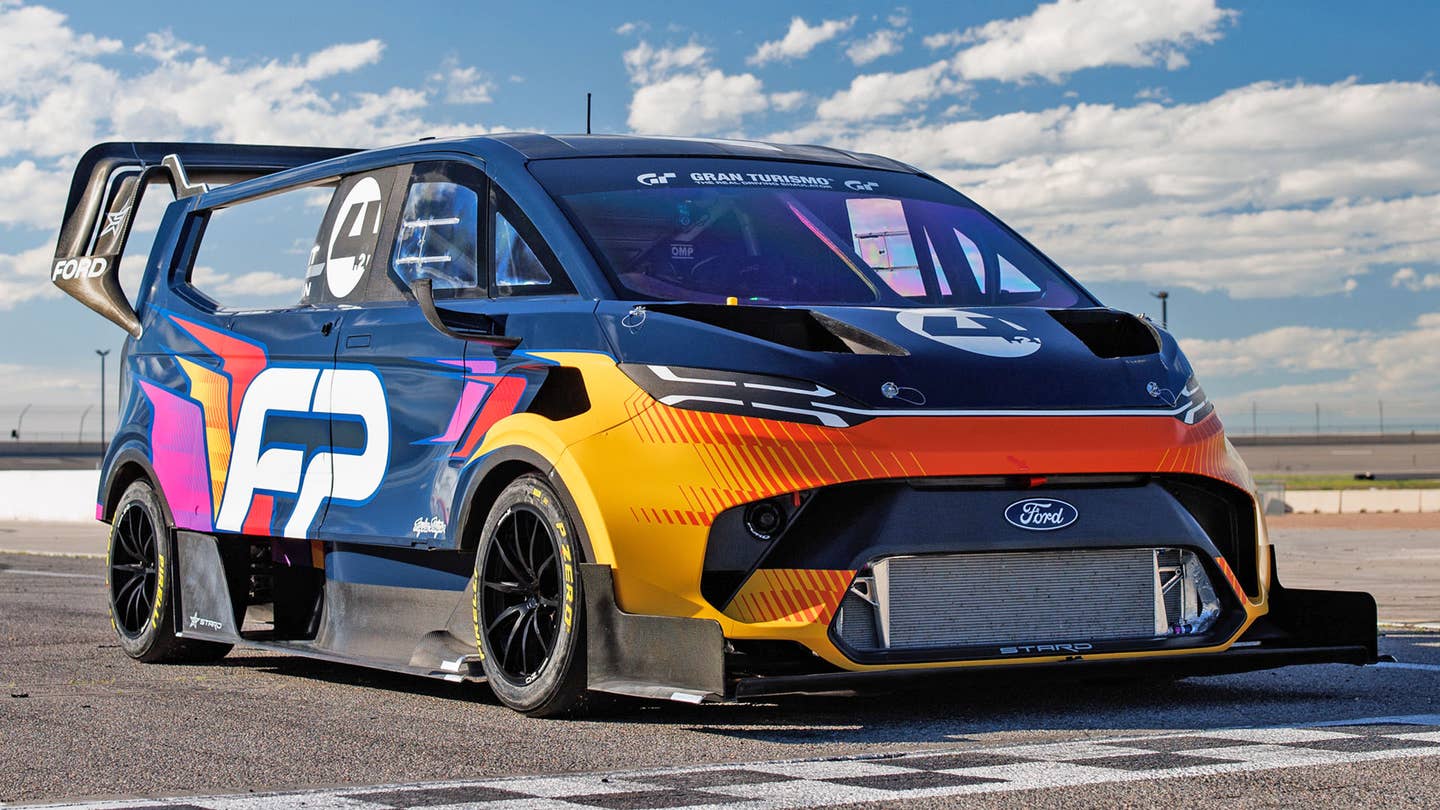Ford doesn’t say it’s gunning for a record, but this new van certainly has the potential.

The electric Ford SuperVan made its public debut at the Goodwood Festival of Speed last year with an all-wheel-drive setup and up to 2,000 horsepower. It did a bunch of big smokey burnouts and tore up the track at a brisk pace. Now there’s a new upgraded version called SuperVan 4.2, and it’s set to race up Pikes Peak this weekend with 4,000 pounds of downforce.
This isn’t the same van we saw in the U.K. last year. Not only has the aero been heavily revised, but the drivetrain and chassis are different too. All of the alterations have been completed with the Pikes Peak International Hill Climb in mind.
The van has moved from four motors to three, with two on the rear axle and one on the front. That means 1,400 horsepower as opposed to the old 2,000. The motors themselves are very interesting, but there is little information on them. They’re designed and built by a company called Stohl Advanced Research and Development, which works on high-performance electric vehicle powertrains. The motors have six phases as opposed to the usual three found in almost all conventional EV motors. This effectively makes them two motors in one, unless STARD has an inverter that can natively handle six phases.
The advantages to this are unclear in practice, but on paper, it could allow for a simpler controller that uses square waves as opposed to sine waves, or two conventional inverters for a single motor to allow for higher continuous current. It sounds like the SuperVan uses square waves, as the high-pitched squeal you hear from the race car is unlike any noise you’ll hear from a more efficient and quieter conventional inverter in passenger cars.
The battery used in the van is equally unconventional in the context of a normal EV. It utilizes a nickel manganese cobalt chemistry like many higher-end consumer EVs do, but it’s a lithium polymer battery as opposed to a lithium-ion unit. This means it can output considerably more current for a given capacity, at the cost of stability, safety, and volume. Ford doesn’t say how big the battery is in kWh nor does it comment on its voltage, but it’s capable of discharging at 1,050 kW and charging (braking) at 600 kW. Whether these are peak or continuous figures is also not stated, but carbon ceramic brakes are provided as well, in case 800 hp of braking force from the drivetrain is not adequate.
Many Pikes Peak challengers get a heavy dose of aero, and the SuperVan is no different. The bodywork has been heavily revised since we last saw it, and it now produces 4,000 pounds of downforce at 150 miles per hour. Other areas of the car like the driveshafts have also been upgraded, and the van gets magnesium wheels as well.
Ford has not stated that it plans to set a record at Pikes Peak, but the van has the potential. The current record is held by the electric Volkswagen ID.R, and Ford’s regenerative braking alone is more powerful than the total output of that car.
We’ll find out this weekend whether or not the brute force of 1,400 hp will be enough able to tackle the mountain in record time.
Got a tip or question for the author? Contact them directly: peter@thedrive.com


